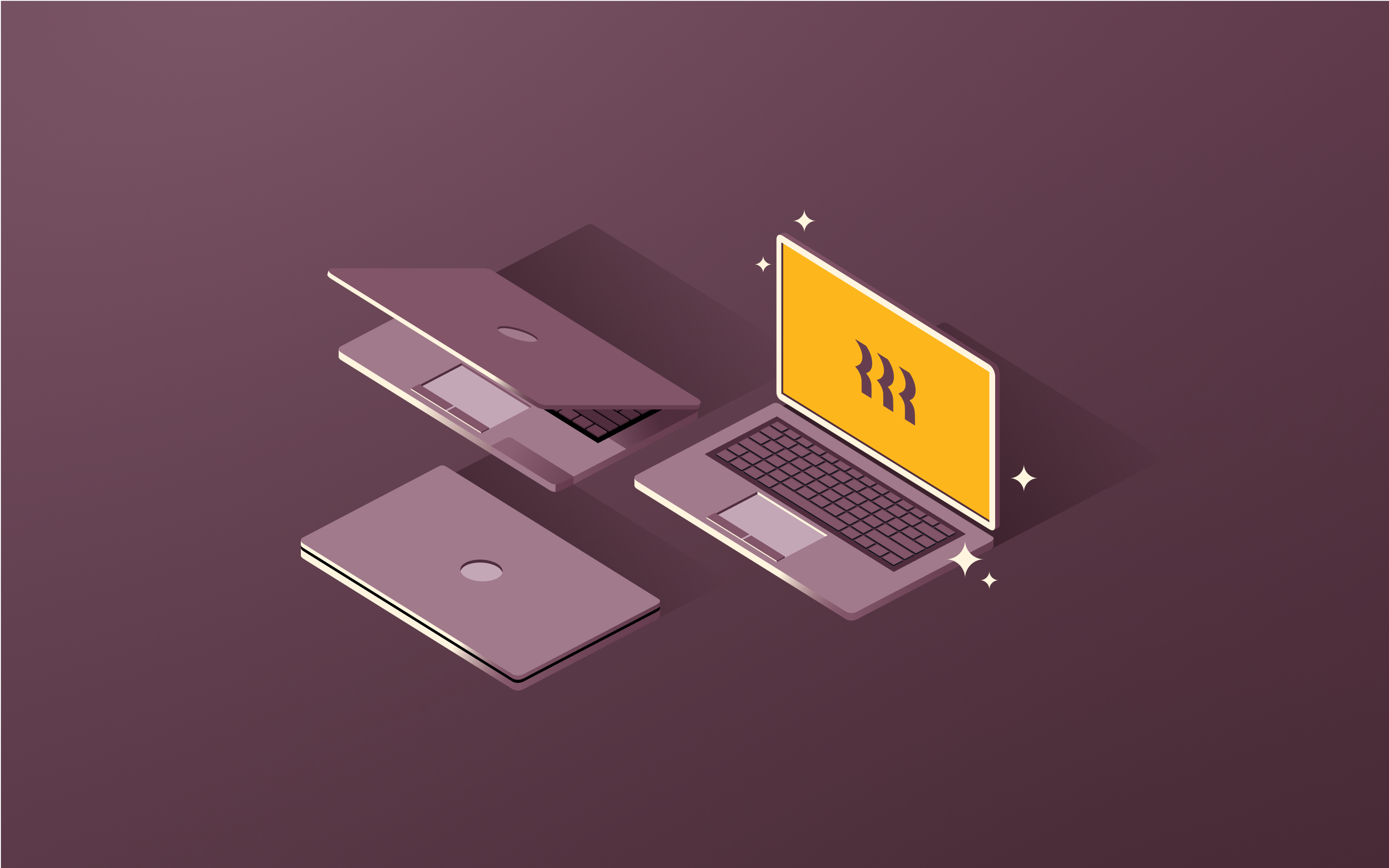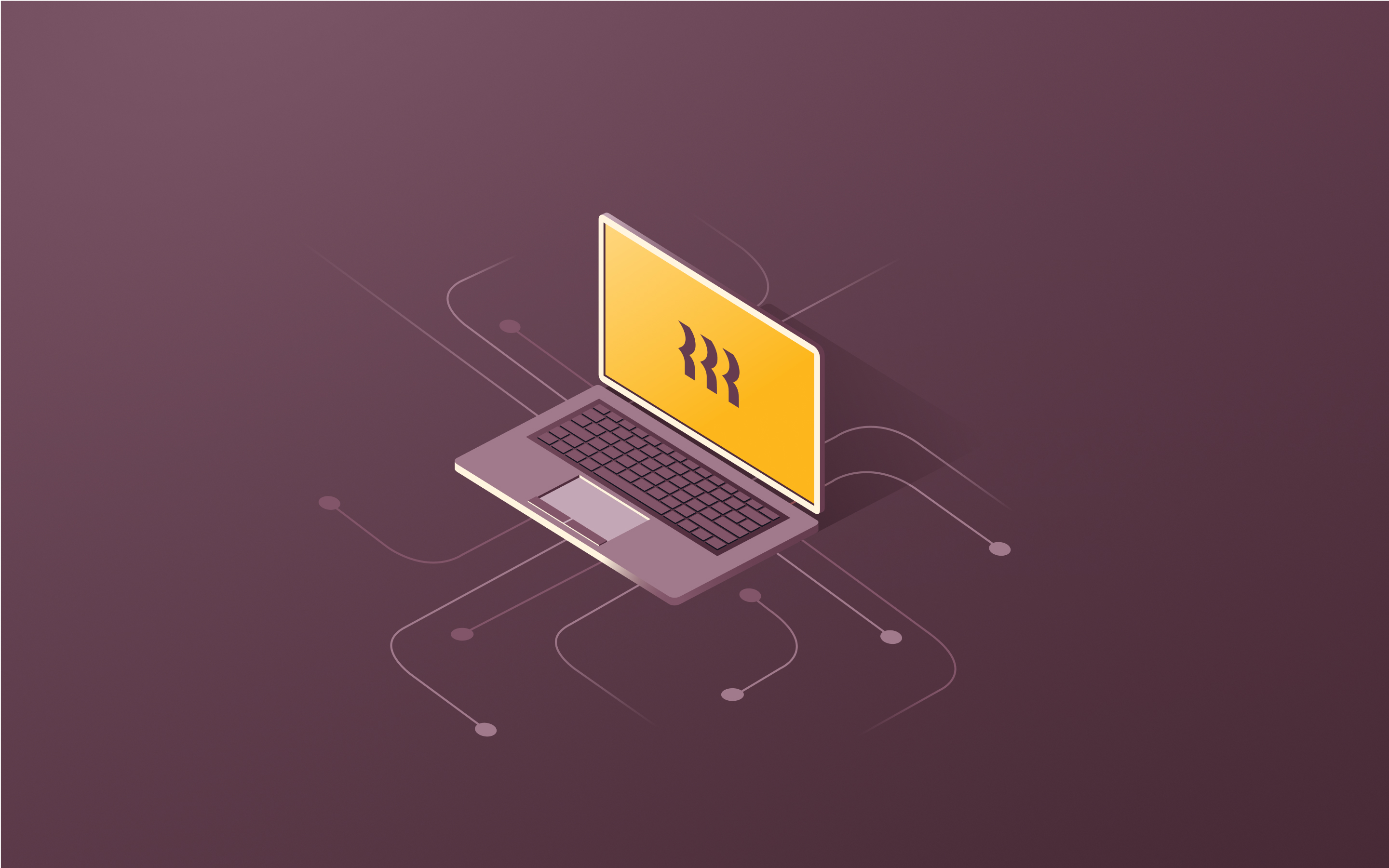New employee orientation: What it is, checklist, and best practices

As an employer, you know that a new hire's first impression can significantly impact their performance in the workplace—not to mention how long they stay with your company.
If the new hire’s experience is positive, especially during the first 90 days of working at your organization, you’ll lower the chances that they’ll turn over within their first year, which has significant costs for employers, both in terms of finances and productivity.
This positive experience starts with proper job orientation for new hires before they dive into their onboarding tasks. And it goes beyond paperwork and introductions. Orientation is about immersing new team members in your company culture, clarifying expectations, and providing the tools they need to excel.
This guide will help you create an effective orientation program that transforms new hires into productive, engaged team members. We'll cover essential elements, best practices, and how to leverage HR tools to streamline the process.
What is a job orientation for new employees?
Job orientation is a structured, one-time event that represents an introduction to your company, typically occurring on the new hire’s first day or within their first week. It provides key information about company policies, procedures, and culture, while familiarizing new employees with their work environment, team, and tools, and clarifying job expectations. As the initial part of the longer onboarding process, job orientation aims to quickly acclimate employees and provide a foundation for their success in the company.
Look at new hire orientation as an opportunity to make a strong first impression and set the stage for your new employee’s success. Depending on whether your team is remote, hybrid, or office-based, the orientation session may take place in a conference room or during a video call.
How long is orientation? Job orientation can last anywhere from a few hours to a full day, depending on your company's size and complexity. It should cover:
- Company overview, including your mission, values, and structure
- HR policies, including benefits, time off, dress code, etc.
- Introduction to key team members and departments
- How to set up necessary accounts and equipment
- Safety procedures and emergency protocols (if applicable)
- Tour of the facilities (if applicable)
Remember, orientation is about making new hires feel welcome and prepared in their workplace. It's your chance to reinforce their decision to join your team and set them up for a smooth transition into their role.
Employee onboarding vs. employee orientation: What’s the difference?
While these terms are often used interchangeably, onboarding and orientation are distinct processes, each crucial to integrating new employees.
Orientation is a one-time event that kicks off the onboarding process. It's focused on:
- Providing a warm welcome
- Sharing essential company information
- Completing necessary paperwork
- Setting up basic tools and access
Onboarding, on the other hand, is a comprehensive process that can span weeks—or even months. It involves:
- In-depth job training
- Goal setting and performance expectations
- Regular check-ins and feedback
- Gradual immersion into company culture and processes
Why are both processes crucial?
- Orientation provides the immediate information and tools new hires need to start their job. It reduces first-day anxiety and sets a positive tone for their employment.
- Onboarding ensures long-term success by providing ongoing support, training, and integration. It helps new employees become fully productive team members.
Together, effective orientation as the first step of the onboarding process can increase employee engagement and satisfaction, improve employee retention rates, boost productivity, and reinforce company culture. By investing in this entire process, you're not just filling a position—you're setting the foundation for a long-term, mutually beneficial relationship with your new hire.
The importance of new employee orientation
Let’s take a closer look at the ways a well-thought-out orientation process can benefit both your new hire and yourself as the employer.
Improved employee engagement
With a well-structured (and executed) job orientation, you set the tone for an employee's entire journey with your company. This gives you a unique opportunity to ignite enthusiasm about their new job and start building a sense of belonging from day one.
Reduced stress and anxiety for new employees
Starting a new job can be overwhelming, but orientation can minimize the jitters. Providing clear information and expectations upfront—for example, by sending a detailed orientation agenda in advance—helps new hires know exactly what to prepare for on their first day, which can significantly contribute to employees’ focus on learning and integration.
Fewer mistakes and workflow disruptions
Understanding company policies, procedures, and job expectations from the very first day can significantly reduce errors and misunderstandings down the line. When a new employee undergoes a detailed orientation on the company’s systems and processes, they’ll be able to ask questions and clarify any ambiguities regarding their responsibilities.
Accelerated time-to-productivity
Gallup found that it may take up to 12 months for a new hire to reach full (or the required) productivity at work. A well-designed orientation program can help new employees become productive team members more quickly by providing them with the necessary tools, information, and connections from the very first day.
Enhanced retention rates
Employees who experience a positive, informative orientation are more likely to feel valued and committed to the company. Orientation should help them feel welcome and supported during onboarding, like you genuinely care about them succeeding in your organization. This could motivate them to be even more productive and dedicated to company goals for longer.
As you can see, these benefits demonstrate that orientation is not just a formality, but a strategic tool for building a strong, engaged, and productive workforce.
New employee orientation checklist
As an HR manager, developing a structured orientation program not only makes new employees feel welcome but also ensures they receive consistent, comprehensive information about your company and their role. This demonstrates your company's professionalism and commitment to employee success. It also helps new hires integrate more quickly and effectively into your organization, potentially avoiding mistakes and process bottlenecks down the lane.
The checklist you'll find below shows some of the key things your orientation program should cover on the first day and the first week:
First day
- Warm welcome:
- Greet the new employee personally
- Provide a welcome package (company swag, office supplies, etc.)
- Have a welcome sign or message at their workspace
- Office tour:
- Show them around the workplace, including their workspace
- Point out common areas, if applicable (kitchen, restrooms, meeting rooms)
- Explain any office protocols, like how to book meeting rooms or lunch area etiquette they need to know
- Introduction to colleagues:
- Introduce them to their immediate team
- Make a note of key personnel they'll be interacting with
- Assign a "buddy" or mentor for informal support
- Company presentation:
- Provide an overview of the company's history, mission, and values
- Explain the organizational structure
- Employee handbook:
- Review key policies and procedures they need to know
- Explain time-off requests and sick leave policies
- Discuss dress code and work hours
- Technology setup:
- Ensure their workstation is ready (computer, phone, etc.)
- Ensure all necessary accounts and permissions are set up
- Provide an overview of the company's main communication tools
- Safety briefing (if applicable):
- Cover emergency procedures and exits
- Explain any relevant safety protocols
- Provide information on first aid facilities
- Compliance training:
- Schedule any required compliance or ethics training
- Ensure understanding of critical policies, such as data protection and confidentiality
- Paperwork completion:
- Assist with any remaining new hire paperwork
- Help with benefit enrollments
- Collect any necessary identification or work eligibility documents
- Schedule overview:
- Provide a schedule for the first week
- Explain typical daily and weekly routines
- Company culture introduction:
- Share company traditions and social events
- Explain any volunteering or community involvement programs
- Lunch plans:
- Arrange a team lunch or coffee break
- Provide information on nearby lunch options (if applicable)
- End-of-day check-in:
- Brief meeting to answer any questions
- Confirm the schedule for the next day
First week
- Job responsibilities discussion:
- Have a detailed conversation about their role and responsibilities
- Discuss performance expectations and KPIs
- Provide an overview of current projects they'll be involved in
- One-on-one with the new manager:
- Schedule a meeting with their direct supervisor
- Discuss work style preferences and team dynamics
- Set immediate priorities and goals
- Team integration activities:
- Organize informal team lunches or coffee breaks (on-site or virtual)
- Schedule short meet-and-greets with key collaborators from other departments
- Include the new hire in team meetings and discussions
- Training sessions:
- Begin any necessary job-specific training programs
- Schedule company-specific training, like compliance or security
- Provide resources for self-paced learning
- Provide more detailed training on team-specific software
- Company products/services overview:
- Offer a detailed look at the company's offerings
- Explain how their role contributes to these products/services
- Company culture immersion:
- Share stories that illustrate company values in action
- Invite them to upcoming company events or activities
- Explain any unique company traditions or practices
- Goal setting:
- Work with the new hire to establish short-term goals (30, 60, 90 days)
- Discuss long-term career development opportunities
- Explain the performance review process
- Recap and feedback session:
- At the end of the week, recap key points
- Gather feedback on the orientation process
- Address any lingering questions or concerns
- Benefits deep dive:
- Schedule a session with HR to explain benefits in detail
- Provide deadlines for enrollment in optional programs
- Workspace personalization:
- Encourage the new hire to make their workspace more comfortable and personal
- Provide any ergonomic assessments if needed
Remember, new employee orientation is not just about information transfer—it's about making your new employee feel valued, prepared, and excited to contribute to their new job. Tailor these checklists to fit your company's unique culture and needs, and don't hesitate to spread out activities if they feel overwhelming on day one or the first week.
12 best practices for new employee orientation
The following best practices cover a wide range of aspects, from pre-arrival preparation to long-term integration of new hires, and provide HR managers with a thorough guide for creating effective new hire orientation and onboarding processes.
Here’s how to design and implement a stellar orientation experience:
Share the agenda in advance
Providing a clear agenda reduces anxiety and helps new hires prepare mentally for their first day. Send a detailed schedule at least 48 hours before the first day, including topics to be covered and any pre-work required.
Include clear information
Clear, concise information helps prevent confusion and ensures new hires retain crucial details about their role and the company. Create a "New Employee Handbook" that summarizes key information in an easy-to-digest format.
Automate paperwork
Automating paperwork reduces administrative burden and allows more time for meaningful orientation activities. Implement employee onboarding software solutions that allow new hires to complete necessary forms electronically before their first day.
Set up office and equipment before new employees arrive
Having everything ready shows professionalism and allows new hires to dive into their roles immediately. Create a pre-arrival checklist for IT and facilities teams to ensure workstations are fully set up at least a day before the new hire starts.
Explain the organizational culture of the company
Understanding company culture helps new hires integrate more quickly and align their work with company values. Incorporate culture-focused activities, such as a "culture chat" with long-time employees or a scavenger hunt that highlights company traditions.
Automate device allocation
Streamlining device allocation ensures new hires have the tools they need from day one, reducing downtime and frustration. Implement an IT management system that automatically assigns and tracks devices based on job roles.
Conduct surveys to receive feedback on the orientation process
Regular feedback helps you continually improve your orientation program and address any gaps or issues new hires may experience. Send out short, focused surveys at the end of the first day, first week, and first month to gather timely feedback.
Assign a buddy or mentor
Having a designated point of contact helps new hires feel supported and gives them a go-to person for questions or concerns. Match new hires with experienced employees based on job similarities or shared interests, and provide guidelines for the buddy/mentor role.
Incorporate interactive learning methods
Interactive learning increases engagement and retention of information, making the orientation process more effective for new employees. A few things you can include in your orientation program are:
- Role-playing exercises (especially for client-facing roles!)
- Gamification elements
- VR experiences
Extend orientation beyond the first week
Learning and integration continue well beyond the first few days, and ongoing support throughout the entire onboarding process can significantly improve new hire success and retention. Design a 30-60-90 day plan for each new employee, with regular check-ins, targeted learning opportunities, training sessions, and social events to ensure ongoing support and integration.
Use PEO services to streamline onboarding
Professional Employer Organizations (PEOs) can significantly simplify and standardize new hire onboarding process and ensure compliance with employment laws and other regulations if your employees are in the US. From paperless onboarding to tax registration in different states, a PEO can help you get an employee ready to hit the ground running in no time.
If you partner with a reputable PEO, like Rippling, you can enjoy comprehensive digital onboarding services, including paperwork automation, device provisioning and management, benefits administration, and compliance management.
Prevent information overload
Bombarding new hires with too much information at once can lead to confusion, stress, and poor retention of crucial details. Structure your employee orientation program into shorter, focused sessions that are held or automatically sent to employees (depending on task/session type) over several days or weeks. Aim for sessions no longer than 60 minutes, with ample breaks in between.
Here are a few notable examples of how different companies apply these best practices to their new hire orientation programs:
- Salesforce includes a "Culture Immersion Day" in its orientation program, where new hires participate in activities (like fireside chats with executives) that demonstrate the company's commitment to innovation, customer success, sustainability, and giving back to the community
- IBM uses an employee choice program where new hires can choose their devices before their start date, ensuring they get to work on a modern device they feel most comfortable and productive with
- Walmart uses VR technology in their associate training to simulate various in-store scenarios, allowing new employees to practice customer service skills in a safe, controlled environment
- Microsoft's "Buddy Program" pairs new hires with experienced employees for their first 90 days, helping newcomers navigate the company culture and build their internal network
- Buffer used to implement an onboarding "Boot Camp," but this program would overwhelm new hires with information impossible to absorb that quickly. The company changed its approach to orientation of new employees and now starts with pre-start emails (five in total), a central onboarding document, and daily email reminders with tasks.
Automated orientation and onboarding with Rippling
A well-structured new employee orientation program is essential for creating a positive first impression and making sure your new employee has all the resources available for them to excel in their role. And now, you can make the hiring and onboarding processes even more efficient.
Rippling's recruiting software allows you to connect and automate every step of the employee lifecycle—from headcount planning to job posting to recruiting to onboarding. When you find the perfect candidate and you’re ready to start their orientation, Rippling makes it easy by automatically sending their offer letter, enrolling them in training, sending their devices, signing them up for app accounts, enrolling them in benefits, and more. It’s all because every app in Rippling is built on a single source of truth for employee data. Everything is automated—no manual data entry required on your part.
FAQs on new employee orientation
What are the three types of employee orientation?
The three main types of employee orientation are formal, informal, and ongoing.
- Formal orientation involves structured programs and presentations introducing new hires to the company's policies, culture, and expectations.
- Informal orientation occurs through casual interactions with colleagues and mentors, helping new employees acclimate to the workplace environment.
- Ongoing orientation extends beyond the initial period, providing continuous support and learning opportunities throughout an employee's tenure.
What is the most important part of a new hire orientation?
The most critical aspect of new hire orientation is creating a welcoming environment that fosters a sense of belonging. This involves clearly communicating the company's mission, values, and culture, helping new hires understand how their role contributes to the organization's goals.
Equally important is providing new employees with the tools, information, and connections they need to become productive and engaged team members quickly.
How do you plan a job orientation for a new employee?
Planning an effective job orientation starts with creating a comprehensive checklist covering all essential topics, from company policies to job-specific training.
You should involve various departments to make sure you’ve addressed all aspects of the new hire's role, and also consider spreading the orientation over several days. Use a mix of formal presentations, interactive sessions, and informal meet-and-greets to keep the new employee engaged and help them build connections within the organization.
This blog is based on information available to Rippling as of September 9, 2024.
Disclaimer: Rippling and its affiliates do not provide tax, accounting, or legal advice. This material has been prepared for informational purposes only, and is not intended to provide or be relied on for tax, accounting, or legal advice. You should consult your own tax, accounting, and legal advisors before engaging in any related activities or transactions.









